Methods
Summary
Laboratory Studies. We will capture hummingbirds throughout the day utilizing the natural temperature cycle to test body temperature management. Previous studies have found that using natural temperature and light conditions result in a more natural physiological response. Captured birds will be placed in a small 2 m long flight aviary that is large enough to accommodate normal hovering. A feeder will be placed inside the enclosure so the hummingbirds can feed ad libitum during the experiment. Also, inside the enclosure will be a sheltered perching area that will be water cooled to ~22 °C which will serve as the cool-temperature microclimate for the experiment. A second sheltered perch that is not cooled (i.e. at ambient temperature) will also be placed in the enclosure to provide a choice of perches so that it can be determined if selection of the cooler microclimate is intentional.
We will use infrared thermography and digital video to test for heat dissipation behavior. Infrared thermography will be done using a FLIR SC6700 Infrared (IR) Video Camera connected to a Lenovo laptop computer running ExperimentIR (FLIR) software and will be used to measure changes in surface temperature in the breast region of the hummingbirds as an indicator of heat dissipation. Because the IR video is high resolution, we can also use it to track movement of breast feathers as an indication of feather erection to expose the skin.
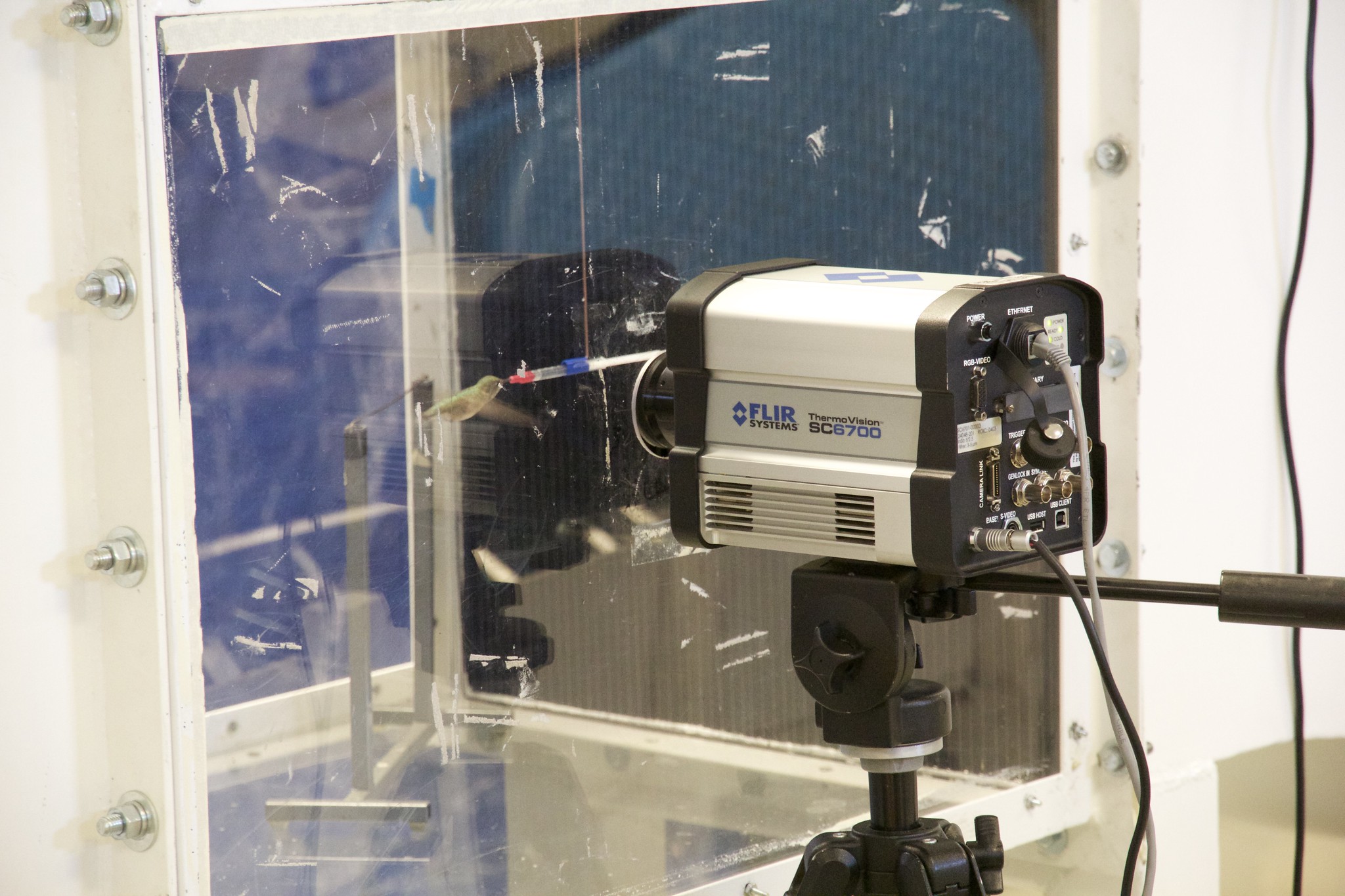
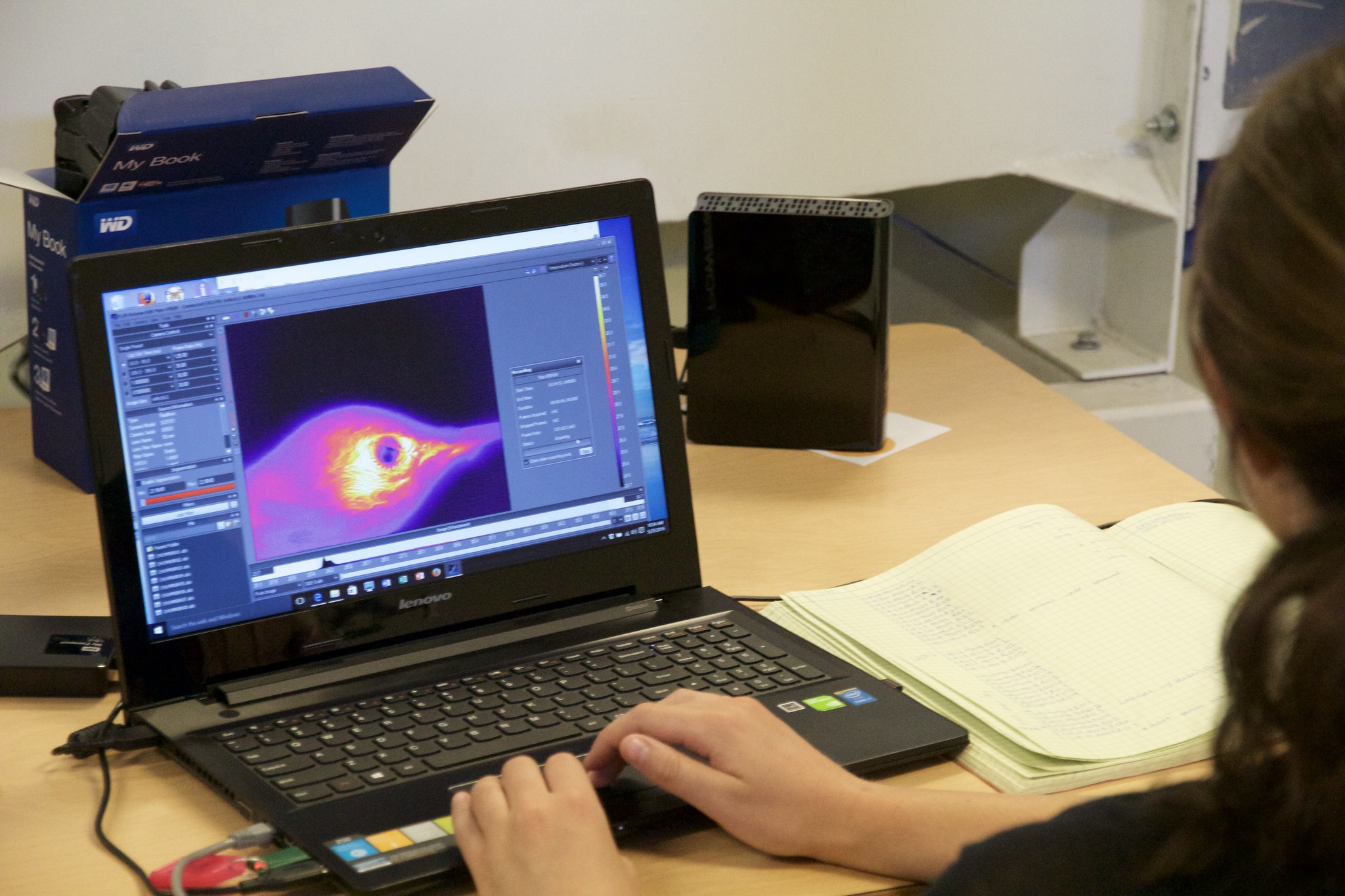
We will also use GoPro Hero 6 HD video cameras to record all hummingbird activities during experimental trials. These videos will be used to calculate total hovering time and hovering bout duration.
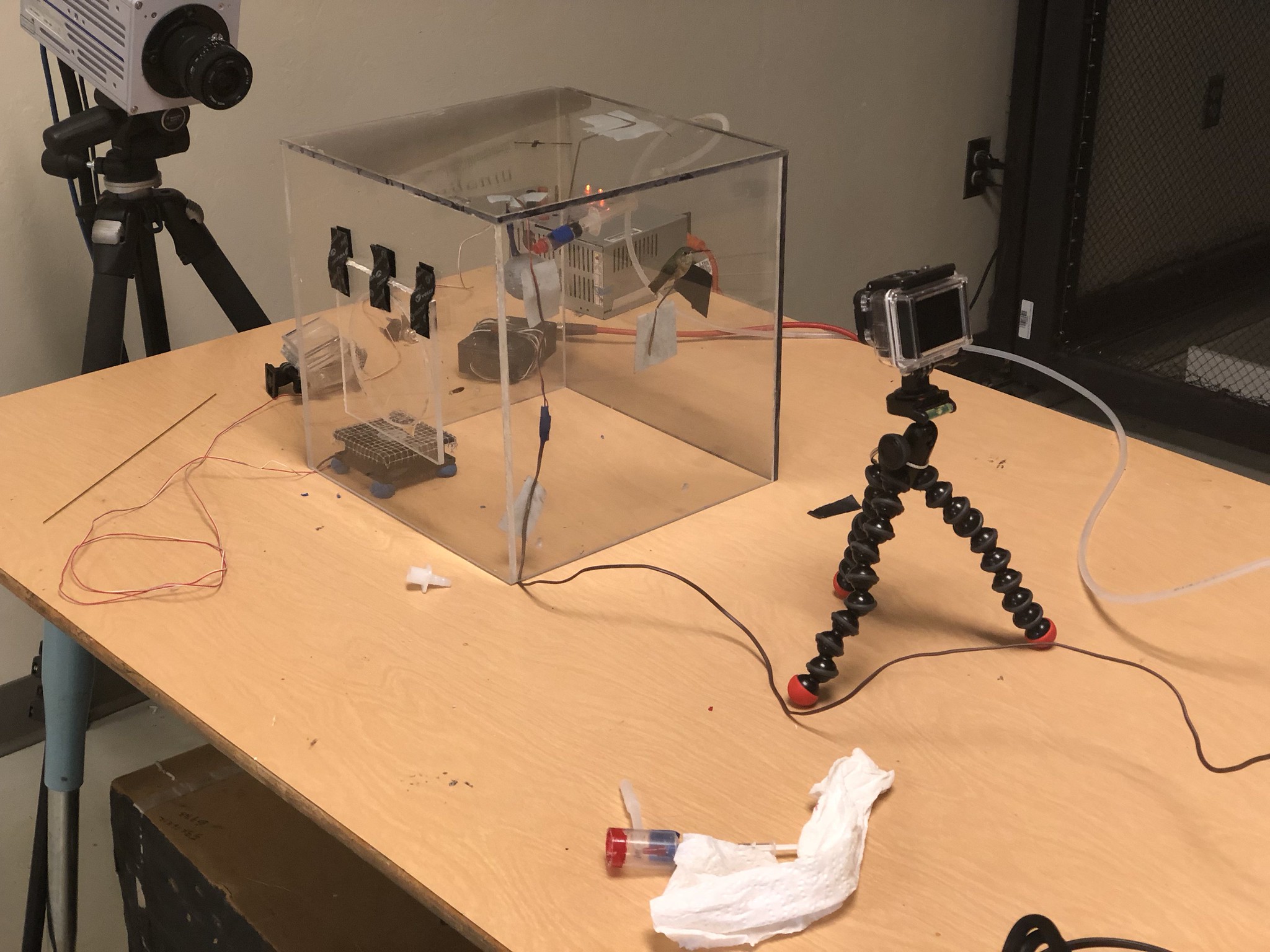
Field Studies. For the duration of the study we will map perch locations throughout the day of all three focal species around the primary feeder patch at SWRS. For each perch location we will plot direction (relative to the feeder patch), plant species, and perch elevation. Perch locations will be recorded as being shaded or in the sun. Each of these variables will be correlated with time-of-day and temperature.
Based on our initial mapping of perch locations, we will place iButtons (Maxim Integrated) at typical perch locations used by the three focal species to record microclimate temperature at 15-minute intervals throughout the day. We will also measure the Operative temperature (Te), which integrates ambient temperature with the effects of solar radiation, to estimate the thermal benefit perch microclimates provide the hummingbirds. Te will be measured using a hollow copper sphere, approximating the volume of a hummingbird, with a type-T (Cu-Cn) thermocouple at its center (Walsberg and Weathers 1986). Thermocouple temperature will be recorded throughout the study by a Veriteq datalogger (Vaisala Corp.).
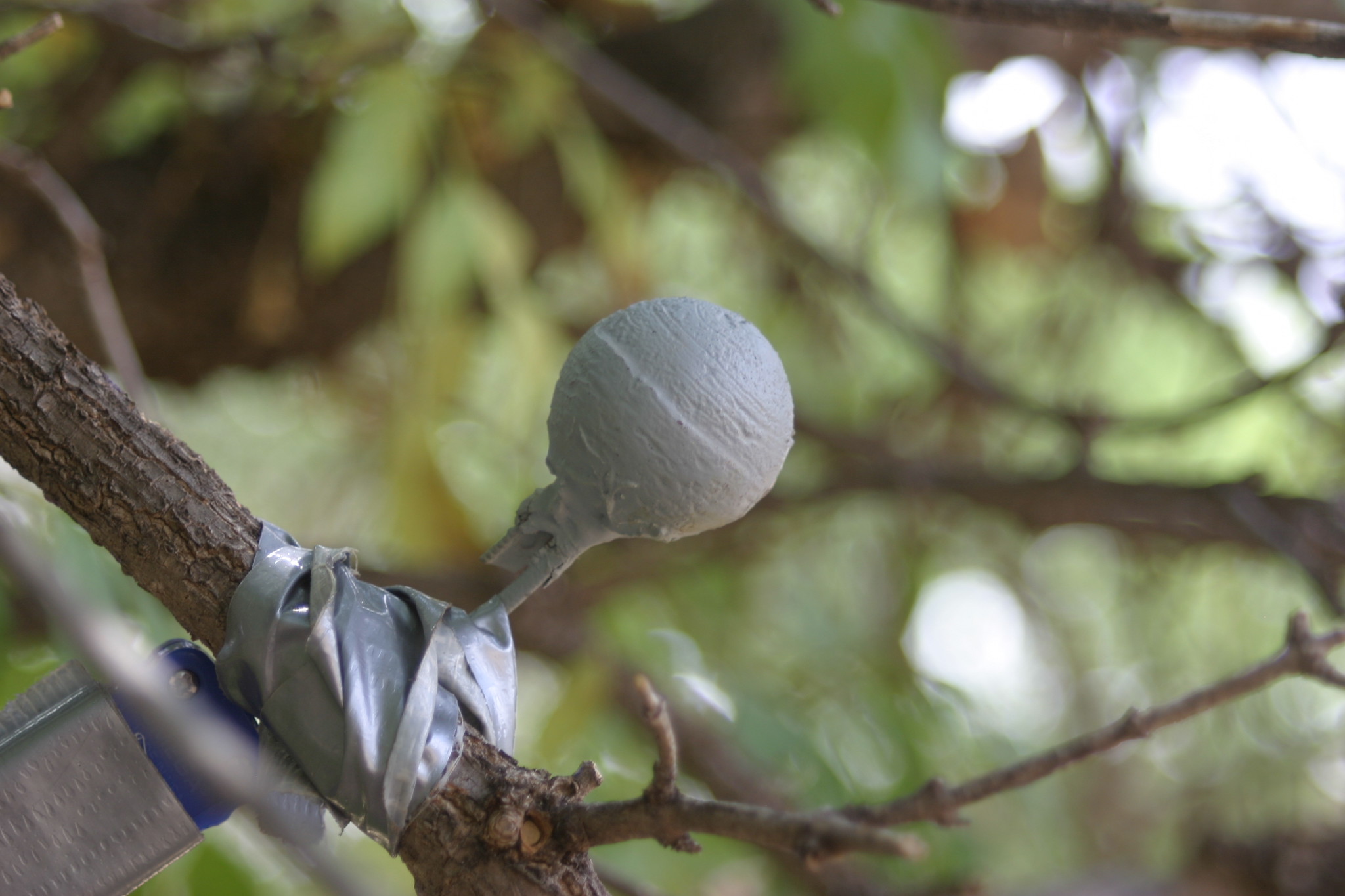
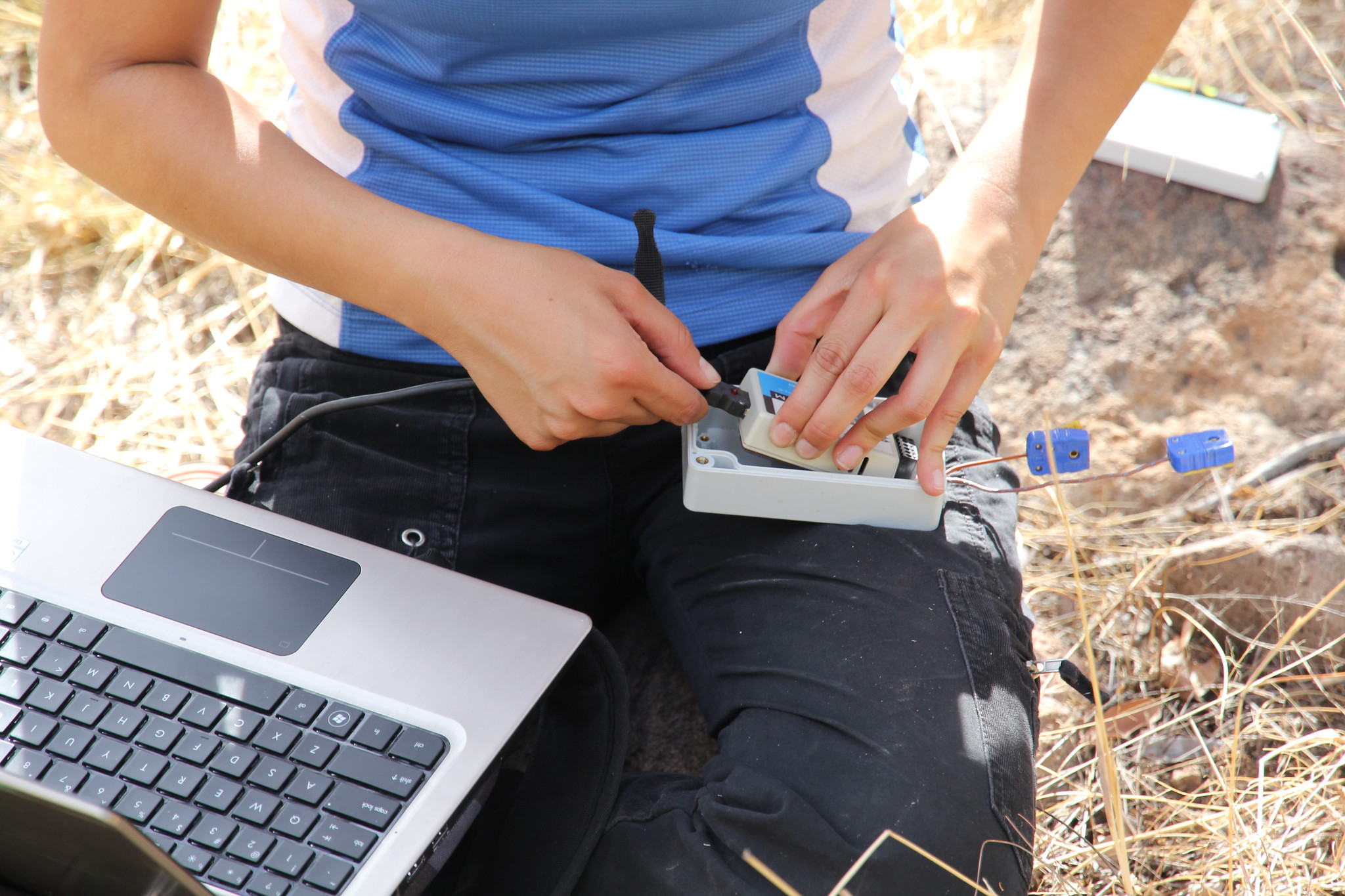
We will use a FLIR SC6700 Infrared (IR) video camera connected to a Lenovo laptop computer running ResearchIR software (FLIR) to record the variation in temperature of perch surfaces and surfaces surrounding the perch locations. Such recordings will be informative about the complexity of the radiative environment associated with perching locations selected by the hummingbirds that might be important for conductive heat transfer (Caillon et al. 2014).
Day 6 Plotwatcher Game Surveillance System cameras will be placed at each of the feeders in the primary feeding patch to record feeding durations (to the nearest 1.0 second) for each of the focal species, and to observe how feeders with different degrees of sun exposure are used throughout the day.

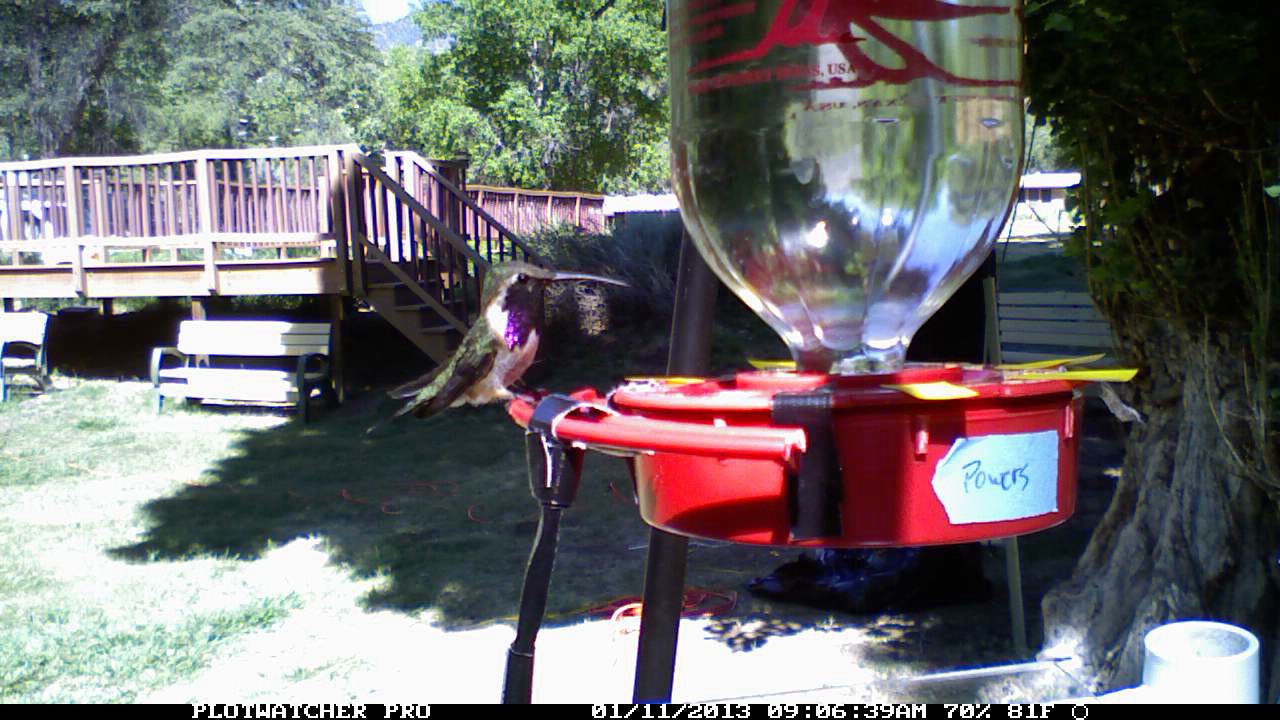
Challenges
The biggest challenge in our proposed experiments will be to contain cooled air around a perch in the small flight aviary. Ideally we would like to avoid adding Plexiglas sides to keep the flight space as open as possible. We also would like to keep the bottom of the aviary open to avoid a ground effect where downward moving air generated by wing movement rebounds upward providing extra lift and reduced hovering costs (Kim et al. 2014). Our hope is that be providing continuous stream of passively falling air from cooling coils above the perch that we can keep the perch temperature well below ambient temperature. We will rigorously test this in the lab prior to leaving for Arizona.
Pre Analysis Plan
The complete plan for analysis is too extensive for details, but some of the basic analyses are as follows:
Lab Cooled Perch Experiment
Choice of cooled vs warm perching locations will be assessed using time budgets based on analysis of GoPro videos correlated with constant measurement of temperature at each perching location as well as laboratory ambient temperature. Laboratory ambient temperatures historically range from about 12-35 °C during the day providing a good range of temperatures that include periods where heat cannot be dissipated during hovering. Further, we will use infrared video images to determine if intentional heat dissipation behaviors are used by the hummingbirds following hovering bouts at warm ambient temperatures. These behaviors show up well as breast-skin surface temperature rapidly rises likely due to increased circulation.
Field Experiments
We will record where hummingbirds are perching throughout the day over a range of ambient temperatures and measure the thermal environment at these perching locations using iButtons. This will tell us if hummingbirds prefer cooler locations as ambient temperatures warm, and if these locations provide a substantially improved thermal gradient for heat dissipation. Further, we will take thermal images of these perching locations allowing us to examine their thermal complexity and perhaps gain insight into what characteristics make a good perching location when ambient temperature is warm.
Protocols
Browse the protocols that are part of the experimental methods.